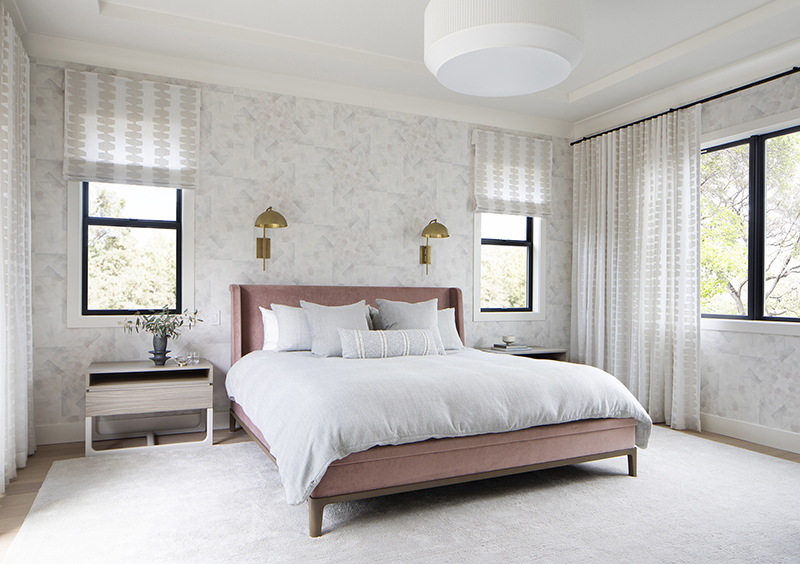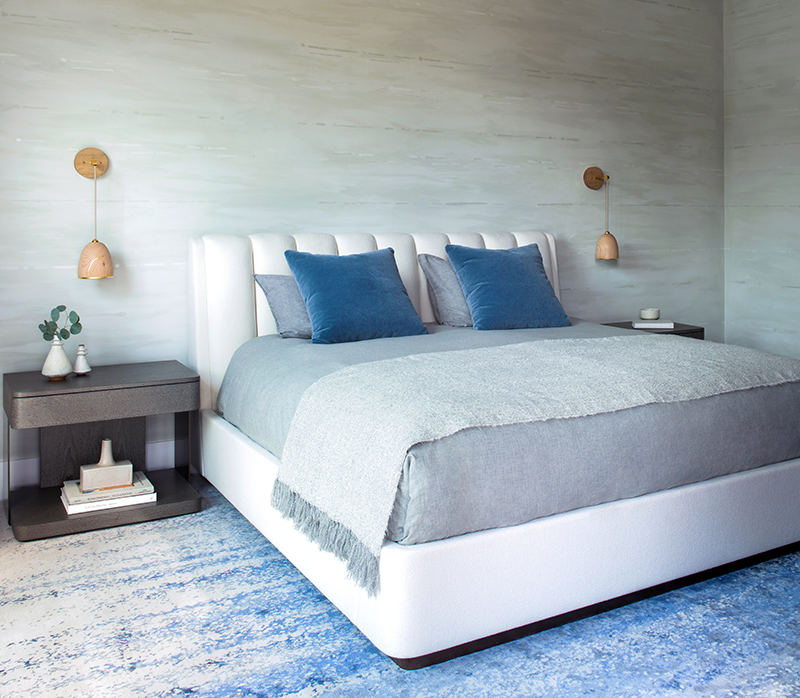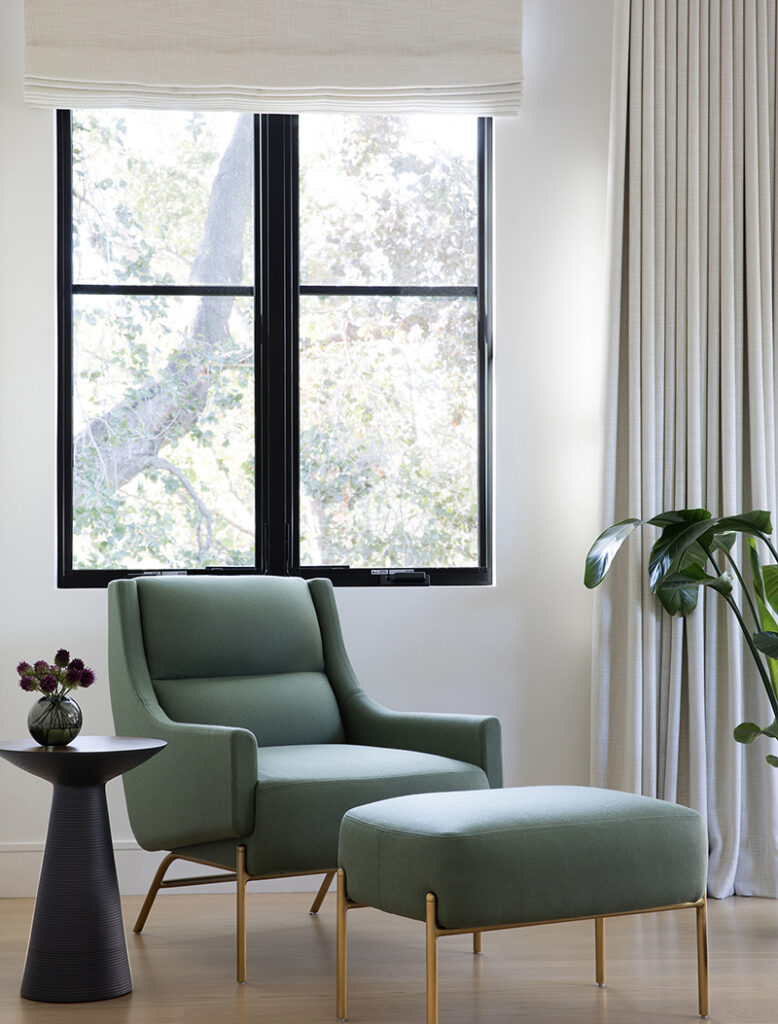Ditch the Toxins: Eco-Friendly Bedroom Tips
We spend roughly a third of our lives sleeping, so it makes sense to invest in healthy, non-toxic products for your bedroom. All of the materials and products that you bring into your bedroom have an impact on the indoor air quality, from window treatments, mattress choice and area rugs. We’re sharing our expertise as sustainable Bay Area interior designers to help you cut through the noise and hone in on the most important factors in designing a healthy bedroom, including product recommendations and advice on the worst materials to avoid in your home.

Mattress
I would argue that your mattress is the most important decision when designing a non-toxic bedroom. Conventional mattresses are made of polyurethane foam that are treated with toxic flame retardant chemicals that disintegrate over time and release into the air (and are associated with upper respiratory problems and other health issues). Now that we know flame retardants are nasty and unnecessary, the goal is to eliminate them completely from your bedroom. Look for mattresses that are Certified Organic, with no added chemicals, and with transparency of materials used on their product tearsheets. Opt for all natural materials such as organic latex, organic cotton and wool, which is inherently flame resistant. Some of our favorite eco-friendly mattress brands are: Naturepedic, OMI, Saatva, and Hastens.
Bedding
Organic cotton and linen sheets and bedding are the most popular sustainable choice, while bamboo bedding is gaining in popularity. Bamboo is a self-regenerating plant that needs only a third of the water used to grow cotton. Organic cotton and linen are grown without the use of toxic and persistent pesticides and synthetic fertilizers. By purchasing organic textiles you can help conserve water, support biodiversity and healthy soils, and eliminate hazardous toxic pesticides from our environment. From an interior design standpoint, we prefer lightweight duvet covers in light neutral palettes that can easily transition with the room’s style and the seasons. Bring in color with accent pillows, throw blankets and artwork. Certifications: Oeko tex certified or GOTS certified bedding. Top picks: Coyuchi, Boll & Branch and Cozy Earth.

Rugs
An easy rule of thumb is to opt for natural fiber area rugs, such as wool (the most durable), cotton or jute. Wool is naturally fire retardant unlike its artificial counterparts and it absorbs moisture and captures dust and pollen, reducing humidity and allergens in the air. Avoid rug pads that contain PVC, instead seek out natural latex or recycled felt pads. Synthetic rugs are often made from nylon, acetate, or polyester. These man-made fibers are highly flammable and are often treated with synthetic chemicals to reduce flammability, increasing the potency of toxins off-gassing into your home. If you are sensitive to chemicals or odors, off-gassing from newly installed synthetic rugs and carpets may cause headaches, dizziness, or nausea.
Window treatments
Eliminating PVC roller shades from your home should be the first step on your sustainable journey. PVC is considered the most environmentally damaging plastic, it contains dangerous chemical additives including phthalates, lead, and cadmium, which can be toxic to your health. These toxic additives can leach out or evaporate into the air over time, posing unnecessary dangers. From cradle to grave, the PVC lifecycle (production, use, and disposal) results in the release of toxic, chlorine-based chemicals, and it is one of the world’s largest dioxin sources. Instead of PVC roller shades, consider fabric window treatments. Our designers go-to window treatment styles are flat fold roman shades or drapery panels fabricated with lightweight cotton or linen blend fabrics. Our interior designers prefer to keep window treatments relatively neutral to avoid the need to change them as the style of a room evolves.

Indoor plants
Indoor plants are enjoying a major design moment right now, but did you know they can also drastically improve your indoor air quality as well? In the late 1980’s NASA conducted a Clean Air Study to find the most effective indoor plants for filtering harmful toxins and pollutants from their space stations. The study found that certain plants are effective at removing benzene, formaldehyde, trichloroethylene, xylene, and ammonia from the air — chemicals that have been linked to health effects such as headaches, nausea and eye irritation. A few of these top performers are Dracaena Marginata, Boston Fern, Spider Plant, Rubber Plant and the Variegated Snake Plant.
We love incorporating indoor plants into our Bay Area interior design projects – they add a life to space and provide a much needed organic element. The fiddleleaf fig tree was the plant darling of day until recently, with it’s large sculptural leaves and defined branches. We’ve moved on to it’s cousin, the Ficus Audrey which has slightly smaller leaves and less negative space.
Candles
Most conventional scented candles are made from paraffin wax. When burned, paraffin wax can release toxic volatile organic compounds (VOCs) into the air including acetone, benzene and toluene, which are known carcinogens and can cause allergies, asthma attacks and skin problems. Keep in mind that the amount of VOCs produced may be relatively small and likely do not pose a serious health risk, but purchasing paraffin candles supports the petroleum industry since the ingredients are derived from petroleum, coal or oil shale. Healthier and Greener alternative: Soy candles produce significantly less soot and VOCs and soy wax is derived from natural vegetables and is 100% biodegradable. Win, win! Head to our Green Interior Design page for more information and eco-friendly home design resources.
